
Le Balzac is a movie theater in Paris, France. It features an art deco main auditorium, and is known for its independent arthouse programming.

Le Balzac is a movie theater in Paris, France. It features an art deco main auditorium, and is known for its independent arthouse programming.
Le Balzac was opened in 1935 with a screening of the film The Wedding Night , directed by King Vidor. Initially, Le Balzac specialized in major Hollywood productions. After World War II, Le Balzac turned its focus to French cinema and helped the emergence of French directors such as René Clément and Jacques Tati, before focusing on international arthouse productions. [1] : 62 In 2014 Jean-Jacques Schpoliansky, the long-time director of Le Balzac, described his vision for Le Balzac as "like a literary salon, where people can discuss and imagine changes in society". [2]

French cinema consists of the film industry and its film productions, whether made within the nation of France or by French film production companies abroad. It is the oldest and largest precursor of national cinemas in Europe; with primary influence also on the creation of national cinemas in Asia.

The Olympia is a concert venue in the 9th arrondissement of Paris, France, located at 28 Boulevard des Capucines, equally distancing Madeleine church and Opéra Garnier, 300 metres (980 ft) north of Vendôme square. Its closest métro/RER stations are Madeleine, Opéra, Havre – Caumartin, and Auber.

The Gaumont Film Company, often shortened to Gaumont, is a French film studio headquartered in Neuilly-sur-Seine, France. Founded by the engineer-turned-inventor Léon Gaumont (1864–1946) in 1895, it is the oldest extant film company in the world, established before other studios such as Pathé, Titanus (1904), Nordisk Film (1906), Universal, Paramount, and Nikkatsu.
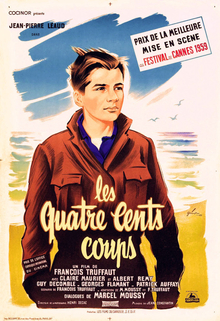
The 400 Blows is a 1959 French coming-of-age drama film, and the directorial debut of François Truffaut. The film, shot in the anamorphic format DyaliScope, stars Jean-Pierre Léaud, Albert Rémy, and Claire Maurier. One of the defining films of the French New Wave, it displays many of the characteristic traits of the movement. Written by Truffaut and Marcel Moussy, the film is about Antoine Doinel, a misunderstood adolescent in Paris who struggles with his parents and teachers due to his rebellious behavior. Filmed on location in Paris and Honfleur, it is the first in a series of five films in which Léaud plays the semi-autobiographical character.
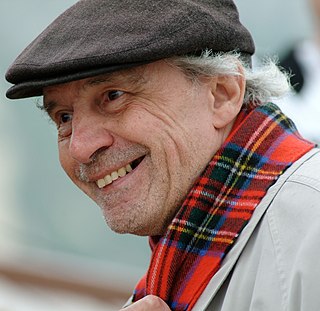
Jacques Rivette was a French film director and film critic most commonly associated with the French New Wave and the film magazine Cahiers du Cinéma. He made twenty-nine films, including L'Amour fou (1969), Out 1 (1971), Celine and Julie Go Boating (1974), and La Belle Noiseuse (1991). His work is noted for its improvisation, loose narratives, and lengthy running times.
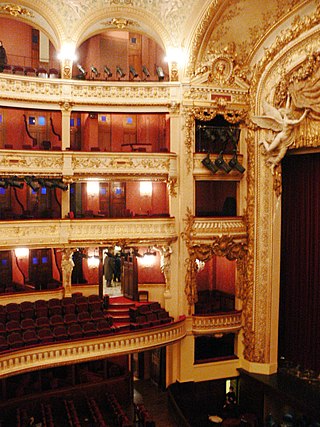
The Opéra-Comique is a Paris opera company which was founded around 1714 by some of the popular theatres of the Parisian fairs. In 1762 the company was merged with – and for a time took the name of – its chief rival, the Comédie-Italienne at the Hôtel de Bourgogne. It was also called the Théâtre-Italien up to about 1793, when it again became most commonly known as the Opéra-Comique. Today the company's official name is Théâtre national de l'Opéra-Comique, and its theatre, with a capacity of around 1,248 seats, sometimes referred to as the Salle Favart, is located at Place Boïeldieu in the 2nd arrondissement of Paris, not far from the Palais Garnier, one of the theatres of the Paris Opéra. The musicians and others associated with the Opéra-Comique have made important contributions to operatic history and tradition in France and to French opera. Its current mission is to reconnect with its history and discover its unique repertoire to ensure production and dissemination of operas for the wider public. Mainstays of the repertory at the Opéra-Comique during its history have included the following works which have each been performed more than 1,000 times by the company: Cavalleria Rusticana, Le chalet, La dame blanche, Le domino noir, La fille du régiment, Lakmé, Manon, Mignon, Les noces de Jeannette, Le pré aux clercs, Tosca, La bohème, Werther and Carmen, the last having been performed more than 2,500 times.

Passy is an area of Paris, France, located in the 16th arrondissement, on the Right Bank. It is adjacent to Auteuil to the southwest, and Chaillot to the northeast.
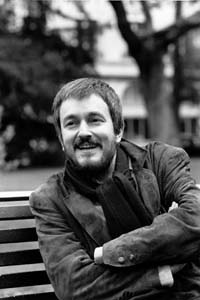
Jean-Jacques Beineix was a French film director best known for the films Diva and Betty Blue. His work is regarded as a prime example of the cinéma du look film movement in France.

The Lycée Henri-IV is a public secondary school located in Paris. Along with the Lycée Louis-le-Grand, it is widely regarded as one of the most prestigious and demanding sixth-form colleges (lycées) in France.

Jacques Feyder was a Belgian actor, screenwriter and film director who worked principally in France, but also in the US, Britain and Germany. He was a director of silent films during the 1920s, and in the 1930s he became associated with the style of poetic realism in French cinema. He adopted French nationality in 1928.
Cinéma du look was a French film movement of the 1980s and 1990s, analysed, for the first time, by French critic Raphaël Bassan in La Revue du Cinéma issue no. 449, May 1989, in which he classified Luc Besson, Jean-Jacques Beineix and Leos Carax as directors of the "look".
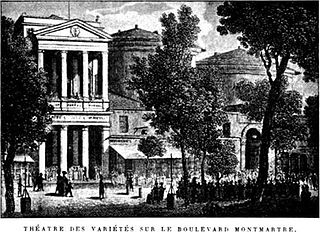
The Théâtre des Variétés is a theatre and "salle de spectacles" at 7–8, boulevard Montmartre, 2nd arrondissement, in Paris. It was declared a monument historique in 1974.

The Théâtre du Gymnase or Théâtre du Gymnase Marie Bell, is a theatre in Paris, at 38 Boulevard Bonne-Nouvelle in the 10th arrondissement.

La Rabouilleuse is an 1842 novel by Honoré de Balzac, and is one of The Celibates in the series La Comédie humaine. The Black Sheep is the title of the English translation by Donald Adamson published by Penguin Classics. It tells the story of the Bridau family, trying to regain their lost inheritance after a series of mishaps.

The Théâtre du Vaudeville was a theatre company in Paris. It opened on 12 January 1792 on rue de Chartres. Its directors, Piis and Barré, mainly put on "petites pièces mêlées de couplets sur des airs connus", including vaudevilles.

The École Normale de Musique de Paris "Alfred Cortot" (ENMP) is a leading conservatoire located in Paris, Île-de-France, France. The school was founded in 1919 by Auguste Mangeot and Alfred Cortot. The term école normale meant a teacher training institution, and the school was intended to produce music teachers as well as concert performers.

The Salle Pleyel is a concert hall in the 8th arrondissement of Paris, France, designed by the acoustician Gustave Lyon together with the architect Jacques Marcel Auburtin, who died in 1926, and the work was completed in 1927 by his collaborators André Granet and Jean-Baptiste Mathon. Its varied programme includes contemporary and popular music. Until 2015, the hall was a major venue for classical orchestral music, with Orchestre de Paris and the Orchestre Philharmonique de Radio France as resident ensembles.
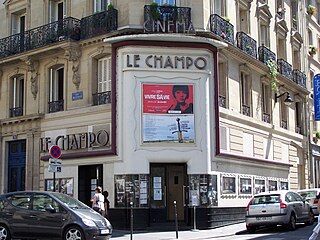
Le Champo, in full Le Champo – Espace Jacques-Tati, is an arthouse cinema in the Latin Quarter of Paris. It is notable for being a favorite haunt of important figures in French cinema history.

The Red Inn is a 1951 French comedy crime film directed by Claude Autant-Lara and starring Fernandel, Françoise Rosay and Julien Carette. It premiered on 19 October 1951. A remake of the film, directed by Gérard Krawczyk, premiered in 2007.

The Théâtre de l'Étoile was a theatre located at 136 Avenue des Champs-Élysées in the 8th arrondissement of Paris. It was built in 1923 and operated as a theatre until 1926. It is not to be confused with a completely unrelated theatre, also called Théâtre de l'Étoile, which operated from 1928 to 1964 on the Avenue Wagram.